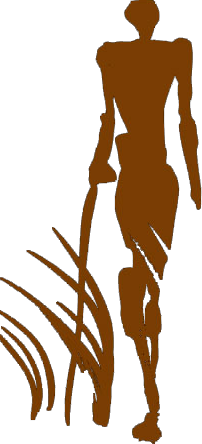Nature is full of patterns: slow patterns of dry, cracked clay soils beneath our feet, the tall lines of the mopane forest ahead of us, and the winding course of the dry riverbed that has been etched between them. The seasonal patterns of rainstorms, rivers that rise three meters in a matter of hours, vast pans of water that only yesterday were not there, and green leaves that appear in the blink of an eye.
Months later those waters are gone, rising slower than they fell: up, into the trunks of trees, rising out through the new leaves, to be blown away in the shapes and patterns of clouds - or carried in the cells of thirsty animals. As the waters leave they patiently draw new lines into the clay soils, different to last year’s but exactly the same, ready to catch, in their cracks, brown leaves that fall, one by one, and blow in the winds of August… until, that is, they are collected by termites and stored in the safety of their towering mounds, awaiting the universal destiny: as nutrients in the soil that will build new trees from a seed that has fallen too.
Of a thousand seeds that fall only one will rise up as tall as a tree and drink water from the falling rain. For through these patterns animals tread, leaving perfect imprints of their own in the sand. They move through the landscape chaotically using their brains to avoid bumping into things. Perhaps chaos is a word for patterns that we do not remember… or cannot yet understand.
Animals are harder to find than you might think. They move silently, and none more so than the elephant. They carry deliberate patterns on their coats and leave a trail of intelligence behind them. Like the leopard who walks on light feet in zigzag patterns to throw us off its path, and watches silently as we, the most intelligent of all, pass only meters away from the speckled coat that vanishes on fallen leaves.
But these tracks under our feet, as we walk down the dry Mwamba riverbed, alongside a mopane forest, are from yesterday’s buffalo: a herd perhaps eight-hundred strong that we followed and found, spilling out from the trees and long grasses into a drying oxbow lagoon, like a long line of ants, each weighing six hundred kilograms. We are back on their trail, and though these tracks are yesterday’s news, they tell us more of the story that we are ever trying to catch up with - in our quest to live amongst the patterns of nature.

